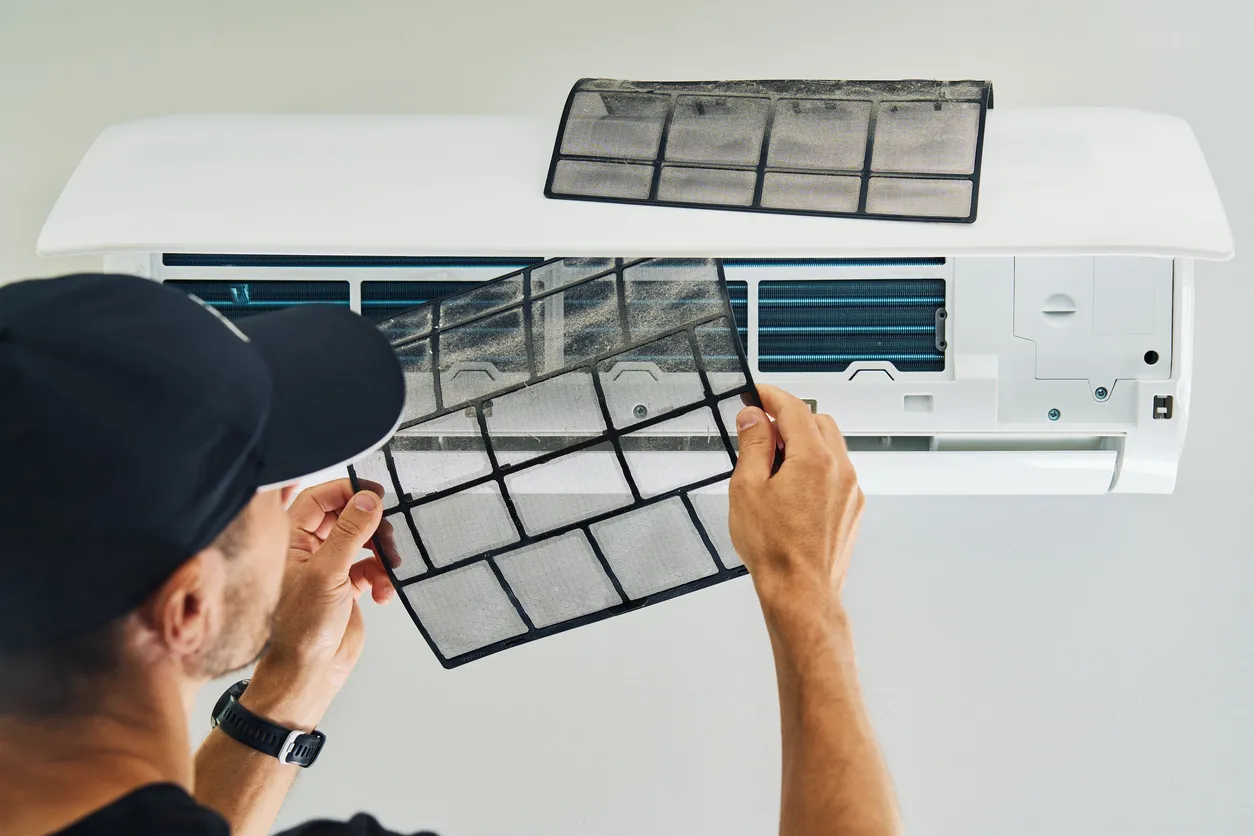When your air conditioning system is working properly, it keeps your home in Stafford cool and dry, especially during the peak of summer. But if you notice water pooling around the unit or dripping from unexpected places, that’s typically a sign something’s wrong. Water leaks can appear minor at first, yet even a small amount of excess moisture can lead to mold, corrosion, or long-term structural damage. The longer you wait, the more likely you’ll need expensive repairs.
Water leaking from your AC isn’t just annoying. It usually points to a problem somewhere in the system. Whether it’s a clogged drain line or an issue with the evaporator coil, pinpointing the source is key before damage spreads. It’s always better to catch these issues early so you’re not left dealing with soaked walls or warped floors during the hottest part of the year. Getting familiar with common signs and knowing what to check can help you act quickly and get the problem under control.
Identify the Source of the Leak
Before you deal with any leak, it helps to understand where the water might be coming from. Several AC components can contribute to this issue. Getting a look at some of these areas may give you the answers you need to move forward with professional support.
Here are three parts of the system you should review when noticing a water leak:
1. Condensate Drain Line – This is the pipe responsible for carrying excess moisture away from the unit. Over time, it can get clogged with dirt, algae, or other debris, preventing water from draining properly. If blocked, it may cause the water to back up and spill out from the drain pan.
2. Evaporator Coil – When the coil is working well, it absorbs heat from your indoor air during the cooling process. However, if it ices over due to problems like airflow issues or dirt buildup, it can eventually thaw and release more water than your system can handle.
3. Refrigerant Levels – Low refrigerant can drop the pressure inside the system, which often causes the evaporator coil to freeze. As that ice melts, it overwhelms the pan or drain line, leading to leaks.
If you start spotting puddles or dripping water near your indoor or outdoor unit, these are some of the most likely culprits. While it’s helpful to be aware of these problem areas, AC systems are complex, and some problems are hard to detect just by looking. That’s why finding the issue early and reaching out to our professionals is the smartest move.
Inspect the Condensate Drain Line
A clogged or disconnected condensate drain line is one of the most common causes of AC water leaks. This pipe plays a key role in carrying moisture collected during the cooling process safely out of your home. When something blocks its path, water buildup can spill back into the unit or leak onto your floor.
You can often find the drain line near the indoor unit, typically running from the drain pan to the outside of your home. If you’re comfortable checking it yourself, here’s what to look for:
– Any visible mold, slime, or gunk collecting around the drain access point
– Standing water in or around the bottom of your air handler
– A PVC pipe that appears loose, cracked, or disconnected
Sometimes, homeowners in Stafford overlook this issue simply because everything else seems to be working. The fan turns on, the temperatures stay cool, but the water underfoot still shows up. If your cooler has trouble draining, that moisture has to go somewhere and unfortunately, that place is often your floors or ceiling.
There are some cases where small clogs may push out with gentle suction, but it’s easy to damage the line or unit without the right tools or training. If the drain line keeps clogging again and again, that points to a bigger issue, like mold growth deeper inside or a misaligned drain pan. In those situations, our technicians can safely clear the blockage and assess whether other parts of your system are suffering from water damage. Ignoring a leak in this area will almost always lead to a more expensive fix later.
Evaluate the Evaporator Coil
The evaporator coil is one of the hardest-working parts of your AC system. It’s usually housed inside the indoor unit and plays a key role in cooling the air. When warm air from your home flows over the coil, the refrigerant inside it pulls out the heat and moisture. That moisture collects and drains through the condensate line. But when something disrupts that cycle, like dirt buildup or restricted airflow, the coil can freeze over. Once it thaws, the extra water can overflow and cause visible leaks.
To check whether the evaporator coil may be the cause behind the water leak, look for signs like:
– Ice buildup on or around the coil casing
– Warm air blowing from vents instead of cool air
– Water leaks occurring shortly after the system shuts off
Another common sign is an AC system that turns off unexpectedly or runs longer than usual without reaching the set temperature. That’s usually because a frozen coil disrupts the balance of cooling within the system.
Trying to fix issues with the coil yourself often leads to more problems, especially if the unit needs to be opened or cleaned internally. Dirty coils are hard to spot without removing panels, and frozen coils can hide deeper causes like blocked air filters or a failing blower motor. Our professionals use proper tools to detect, clean, and restore function to the coil, helping your AC return to normal operation without risking further damage.
Check and Maintain Proper Refrigerant Levels
Refrigerant is the fluid that moves through your AC system, absorbing heat from inside your home and releasing it outside. When refrigerant levels drop below the correct range, your system works harder than it should, and it may start forming ice on the evaporator coil. That ice eventually melts, contributing to puddles or stains near the unit.
Low refrigerant usually means there’s a leak, since refrigerant doesn’t get used up the way fuel does. Homeowners in Stafford who notice their AC running constantly or producing uneven cooling might be dealing with this kind of issue. If you hear hissing or bubbling noises from the unit, that’s another big sign there’s a leak in the refrigerant line.
Common symptoms of refrigerant leaks:
– Sudden drop in cooling performance
– Ice buildup on refrigerant lines or the coil
– AC runs longer than normal with little effect
– Rooms feel humid even when the system is on
Diagnosing and refilling refrigerant isn’t a job for homeowners. It requires specific tools and training. If your system is low on refrigerant, there’s almost always a leak somewhere that needs to be patched. Our technicians can safely test pressure levels, locate the source of the leak, and recharge the system safely according to manufacturer standards.
Keeping Your AC Leak-Free in Stafford
Most AC water leaks can be traced back to the same few components: the drain line, evaporator coil, or refrigerant level. When any of these elements stop working right, moisture builds up in places it shouldn’t. That leads to drips, puddles, and eventually property damage if left alone.
The good news is that timed inspections help you catch signs of wear well before a leak begins. Regular maintenance helps your AC system stay clean, efficient, and ready to handle the increased demand of summer cooling. Instead of waiting until it stops working completely, catching small issues early gives you peace of mind.
Whether you’ve already spotted a water leak or are just seeing early warning signs, getting help from our professionals keeps the problem from growing worse. From clogged drains to refrigerant imbalances, these types of issues are easy to miss without a complete system check. Being proactive can save you from unexpected breakdowns and protect the comfort of your home for the long haul.
For homeowners in Stafford experiencing AC water leaks, early action minimizes damage and ensures comfort during peak heat. Rely on Weather Cool Inc to address these issues with precision, and consider our air conditioning repair in Stafford to keep your system operating smoothly. For a quick estimate or to book a service visit, please contact us today.




